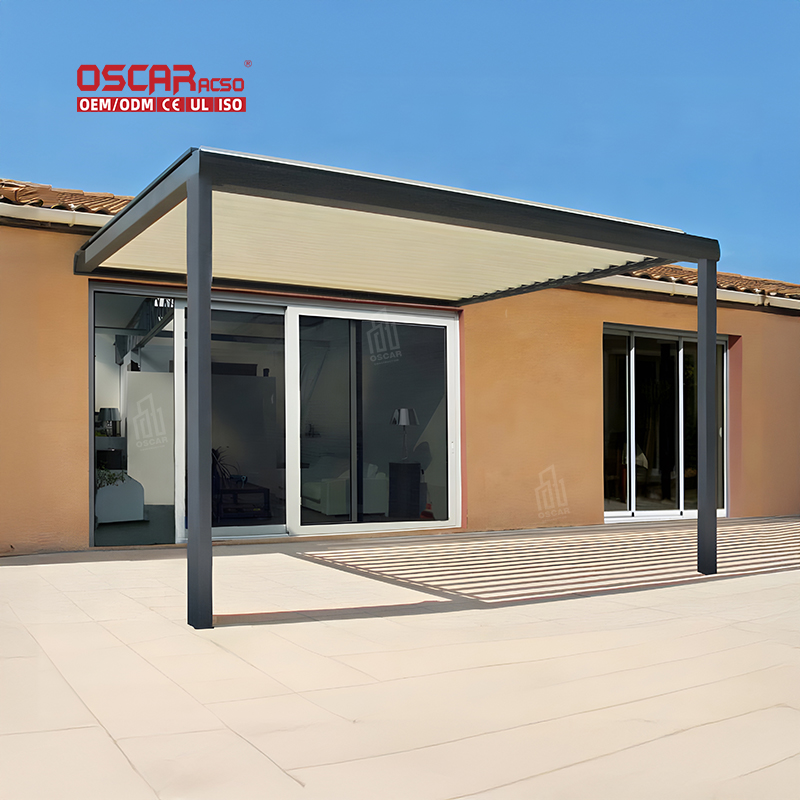Pergola Parts, Unlocking the Anatomy of Your Outdoor Oasis
So, you\'re dreaming of a pergola 🌿. But have you ever stopped to wonder what actually holds this beautiful structure tog...
.jpg)
So, you’re dreaming of a pergola 🌿. But have you ever stopped to wonder what actually holds this beautiful structure together? Understanding the core components of a pergola is more than just learning some technical terms; it’s about empowering you to design, build, or customize the perfect outdoor retreat for your home. Let’s demystify the anatomy of a pergola together!

🏗️ The Core Framework: Essential Structural Parts
Every pergola, from the simplest DIY kit to the most elaborate custom design, is built upon a few fundamental elements. These parts work in harmony to provide stability, shape, and character.
The Mighty Posts: Think of these as the unsung heroes of your pergola. These sturdy vertical supports are the backbone, anchoring the entire structure to the ground and bearing its weight. Typically made from robust wood like cedar or pressure-treated lumber, or even low-maintenance vinyl and aluminum, their size (common dimensions are 4×4 inches or more substantial 6×6 inches) and depth of installation are critical for ensuring stability against wind and other elements.
Beams & Rafters: The Overhead Duo: This is where things get interesting. Beams are the primary horizontal members that rest directly on top of the posts, forming the main support for the roof structure. Running perpendicular to the beams are the rafters. These are the slats that create the iconic open-lattice roof, offering partial shade and that charming play of light and shadow. In many quality kits, these components are mortised and notchedfor a tighter, more secure fit that eliminates wobble and enhances durability.
🔩 Hardware & Connectors: The Invisible Guardians
While the wood defines the look, the hardware ensures it stands the test of time. This is often the most overlooked aspect of a pergola’s anatomy.
Brackets and Fasteners: High-quality stainless steel or galvanized hardware is non-negotiable for resisting rust and corrosion. This includes everything from heavy-duty corner brackets that connect beams to posts, to post base plates that secure the structure to a concrete footing or deck.
Ledger Boards for Attached Pergolas: If your pergola is connected to your house, a ledger board is essential. This horizontal board is securely anchored to your home’s exterior and provides sturdy support for one side of the pergola, seamlessly integrating it with your existing structure.
.jpg)
✨ Functional & Decorative Add-Ons
This is where your pergola transforms from a simple structure into a true outdoor living room. Accessories personalize the space and boost both comfort and functionality.
.jpg)
Shade and Weather Solutions: While the open rafter design is classic, sometimes you crave more coverage. Retractable canopies or canvas screens can be added to provide adjustable shade and protection from light rain. For a more integrated solution, motorized louvers allow you to control the amount of sunlight and ventilation with the push of a button.
Lighting and Ambiance: To extend the use of your pergola into the evening, consider integrating low-voltage LED lighting systems into the structure. String lights 🎇, suspended lamps, or even built-in spotlights can create a magical atmosphere for nighttime entertaining.
Greenery and Personalization: Pergolas and climbing plants are a match made in heaven. Adding trellis panels or simply training vines like wisteria or jasmine up the posts can create a living, natural canopy that blooms throughout the seasons.
🛠️ Material Matters: Choosing Your Building Blocks
The material you choose will define your pergola’s aesthetic, maintenance needs, and longevity.
Classic Wood: Wood offers a timeless, natural beauty. Cedar and redwood are popular for their natural resistance to rot and insects, while pressure-treated pine is a more affordable option. The trade-off? Wood requires regular maintenance like staining or sealing to preserve its appearance and integrity.
Low-Maintenance Alternatives: Vinyl and aluminum pergola kits have gained immense popularity for their durability and minimal upkeep. They won’t warp, rot, or require painting, offering a modern look that stands up to the elements with ease.

My final thought? Viewing your pergola through the lens of its individual parts empowers you as a homeowner. Whether you’re assembling a kit or designing from scratch, this knowledge helps you make informed decisions on materials, hardware, and accessories. The most successful outdoor spaces are those where sturdy construction and personal flair meet, creating a seamless extension of your home that’s built to last and designed for living.

